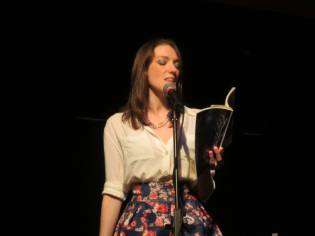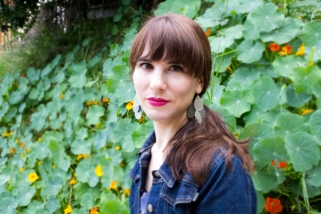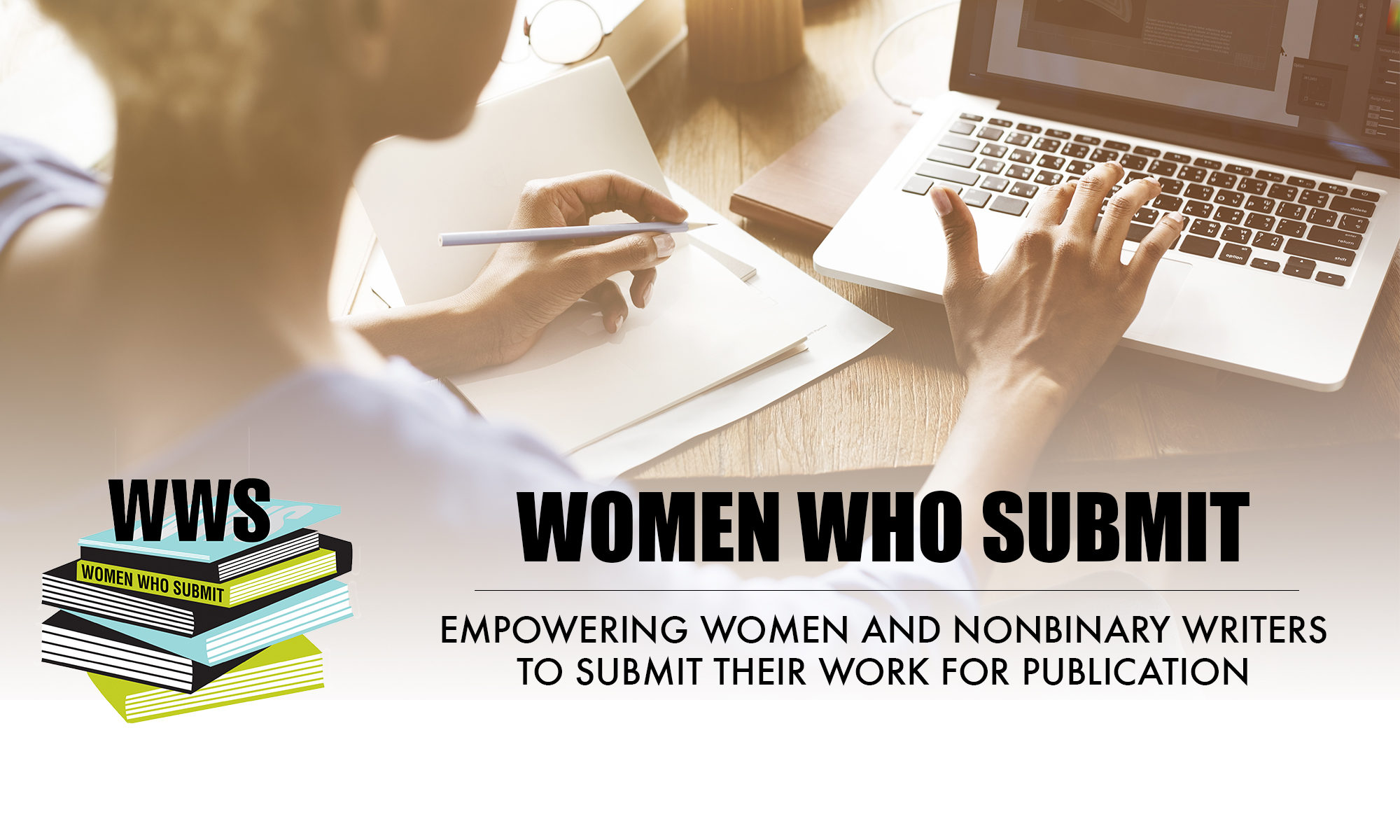By Lauren Eggert-Crowe
I first learned about Hyacinth Girl Press in 2011 when I was looking for a place to submit my first chapbook, The Exhibit. I was floored and elated when HGP accepted my manuscript. That’s when I began corresponding with founder and editor Margaret Bashaar. She and I even collaborated on a poetry manuscript together that, three years later, became our chapbook Rungs, published by Grey Book Press.
From the website: “Hyacinth Girl Press is a micro-press that publishes up to 6 poetry chapbooks each year. We specialize in handmade books of smaller press runs. We consider ourselves a feminist press and are particularly interested in manuscripts dealing with topics such as radical spiritual experiences, creation/interpretation of myth through a feminist lens, and science. [. . .] The ultimate goal of Hyacinth Girl Press is to bring feminism, mysticism, and scientific inquiry together with awesome poetry.”
Hyacinth Girl Press consistently publishes strong and singular projects from new and emerging poets. Margaret’s editorial oversight guides the press’s output into a striking, unique aesthetic. Some of their mouthwatering titles include Prophet Fever, Thirteen Designer Vaginas, Sulfur Water, and Southern Cryptozoology. You can rightfully expect to be jolted or quieted when you read an HGP project.
I spoke to Margaret over email about her job as editor of Hyacinth Girl Press.
Women Who Submit: Let’s say we meet in an elevator at a book festival. What’s your elevator pitch for Hyacinth Girl Press? What is HGP’s mission?
Margaret Bashaar: I just want to make beautiful chapbooks that people can afford and actually want to read. I used to have a big long answer to stuff like this, but I think that’s really it.
As an editor, what are you looking for in chapbook submissions? What makes the really outstanding submissions stand apart? And have you found your sensibilities or standards evolving over the years that you’ve been editor of the press?
It’s really difficult to say what stands out to me in a submission other than to say writing that excites and challenges me, but I imagine that every editor would say that and every writer wants their work to be exciting to an editor. So I guess I have to give the sort of boring answer: I look for writers to follow my guidelines and to demonstrate some kind of familiarity with the work that I publish.
I think it is very easy to see when someone has no idea what I’m into because they didn’t do their due diligence before submitting. Again, not to sound super fucking cheesy, but great manuscripts stand out to me through their movement and the power of their writing, and I am not sure I can advise on how to achieve those things. Write good. Haha.
I have definitely evolved as an editor over the past 8 years, in the same way that I have evolved as a writer. I think I am more interested in experimental work now than I was when I started Hyacinth Girl Press, and more interested in political work. I am less interested in re-told fairytales, and more interested in pop culture. I’m still just as interested in the grotesque.
You are very outspoken about racism, sexism, and classism in the literary world. What are some things you are doing through Hyacinth Girl Press to address structural inequalities in publishing?
I have never charged a fee to submit to my press and I never ever will. I also will never take money from a writer that isn’t directly in exchange for a chapbook, so no crowdfunding or fundraising. And starting with our next publishing cycle, I will be paying every poet that I publish an admittedly small amount of money for their chapbook. I’ve also been working towards making my press more of a welcoming space for writers of color by seeking out writers of color whose work I love and soliciting them for the press. HGP was pretty damn white for a bit there, and that’s my fault as an editor and something I have spent a few years trying to change.
Many writers might not be familiar with chapbooks (their aesthetics, their form, etc). What do you love about chapbooks as a genre and why might new and emerging poets want to consider collating their work into a chapbook?
I love that chapbooks, due to their smaller page count, can be devoured in one read without feeling overwhelming. They can contain a project without it feeling potentially overdone or bloated, and they allow for greater freedom of handmade book creation. I think you should put together a chapbook manuscript if you are working on a project that feels like it should be the size of a chapbook (8-25 pages, in my press’s case).
I honestly don’t entirely advocate the notion of slicing up a full-length book into a chapbook or chapbooks. If you write a chapbook and then it organically evolves into a full-length project, great, but I don’t necessarily go for the idea of taking a full-length book and pulling a chapbook out of it, if that makes sense. I know that’s pretty popular for any number of reasons, but from an artistic and editorial standpoint, it’s not my personal preference. I like chapbooks that are fully realized projects of their own.
WWS wants to encourage writers to re-submit after rejection. Have you ever accepted a manuscript or an author that you had previously rejected? If so, what changed in their work that led to your acceptance?
Yes – I have accepted manuscripts from a few different poets who I had previously rejected. I think what changed for me was that the poets in question had created manuscripts that were more along the lines of what I was looking for that year (so, partly luck) and in both of the cases I can think of off the top of my head, those poets also seemed to have honed their editing skills a bit; they had done a better job of putting the poems in order, of picking which poems needed to be a part of the project they were working on. As my aesthetics have evolved, perhaps they evolved towards what those poets were doing. Maybe before, I was the one who just wasn’t ready for them.

Margaret Bashaar’s first full-length collection of poetry, Stationed Near the Gateway, was published by Sundress Publications in 2015. She has 4 chapbooks: Barefoot and Listening (Tilt, 2009), Letters From Room 27 of the Grand Midway Hotel (Blood Pudding Press, 2011), Rungs, written with Lauren Eggert-Crowe (Grey Book Press, 2015), and a 4th chapbook forthcoming from Saucepot Publishing. Her work has also appeared in Caketrain, New South, Copper Nickel, RHINO, and the anthology Time You Let Me In: 25 Poets Under 25, among others. She also co-hosted and co-ran the poetry cabaret troupe The TypewriterGirls with Crystal Hoffman and has spoken on poetry, publishing, performance, and feminism at AWP, Carlow University, Slippery Rock University, University of Pittsburgh, Frostburg Indie Lit Festival, and SPF. She lives in Pittsburgh with far too many typewriters and writes intermittently for Luna Luna Magazine.

Lauren Eggert-Crowe is the author of four poetry chapbooks: Bitches of the Drought, The Exhibit, In the Songbird Laboratory, and Rungs (co-authored with Margaret Bashaar). She is the Reviews Editor of Terrain.org and her work has appeared in Witch Craft Magazine, Angels Flight Literary West, Horse Less Review, The Rumpus, Salon, and The Millions, among others. She has an MFA in Poetry from The University of Arizona.

